Holding a ripe lemon in his hands, everyone at least once thought about how to sprout lemon from a bone, whether he would grow and bear fruit in the apartment. We hasten to please you that compliance with just a few rules allows many to grow citrus fruits on the windowsill, collecting a considerable harvest of useful fruits.
Content
Bone lemon at home: is it possible?
Most types of citrus fruits grow from a bone. But these fruits come from tropical countries and in our latitudes fruit exclusively in home or greenhouse conditions. But in the process of growing, ovaries are often not formed, which may be absent for 6-10 years. This repels interest, and often the lemon refuses to grow. But knowing some secrets, you can grow an excellent lemon that will bear fruit annually.
Bone lemon in the photo:
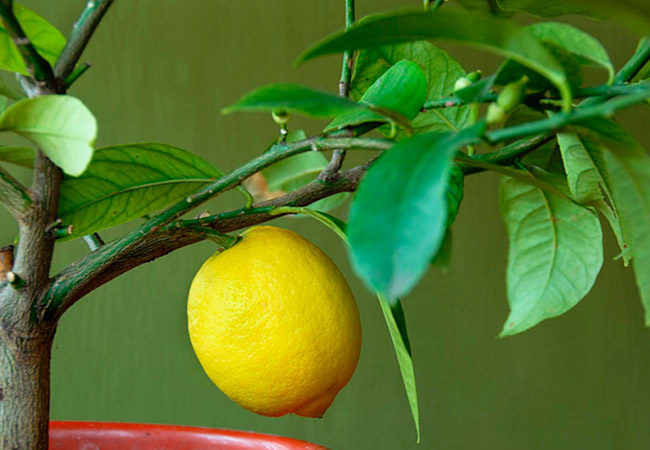
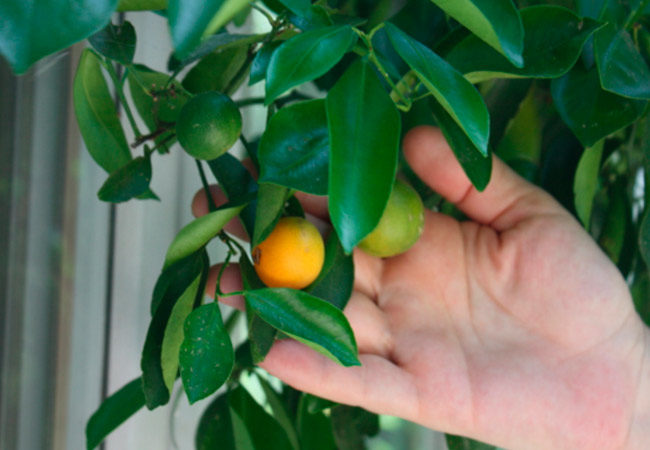
How to grow lemon from a bone
By making a little effort, you can grow a suitable copy, which, with proper care, will get a beautiful decorative crown and will necessarily bear fruit with fragrant lemons. True, some tricks should be remembered:
- firstly, the bone must be removed from an absolutely ripe lemon. Seeds of green fruits will not give seedlings;
- secondly, for planting, you need to select large seeds, it is better to immediately plant at least 15 pieces;
- thirdly, you need to choose the fruit of a certain variety.
Bone lemon cultivation - suitable varieties
In apartment conditions, lemons of the following varieties grow perfectly:
- Meyer - a miniature lemon tree, despite its dimensions, bears fruit abundantly. It gives fruits weighing up to 150 g, it looks elegant during flowering, because it blooms with delicate bundles-grozes.
- Pavlovsky is a hybrid with large fruits that are pleasant taste. The variety, if possible, grows up to two meters in height. The uniqueness of the variety lies in its leaves: they are so aromatic that citrus notes fill the entire space.
- Ponderosis is another combination of lemon and grapefruit tastes. A medium -sized fruit, bitter, in the pulp a lot of bones. It pleases with its flowering year -round, needs the simplest care.
- Jenoa is a tree of medium height, its fruits are moderately sour, very juicy. The crop can be harvested in the fourth year after landing.

Whether the lemon from the bone is fruit
Thinking that the lemon tree in any case bears fruit, you are deceiving yourself. The tree is grown in different ways, and it depends on whether the lemon will grow from the bone, as well as the deadlines for the formation of ovaries and the volume of the harvest. Therefore, the statement that fruiting, regardless of the method of cultivation, is incorrect at 4-6 years.
Also, fruiting is also affected by the care of the tree, namely: top dressing, lighting, soil composition, microclimate in the house. In addition, it is important to consider both the lemon variety and the age of the tree.
Estimated flowering dates of lemon wood are as follows:
- the lemon in a pot of bone fruit fruit after 6-15 years;
- the resulting tree from a cuttings from a previously flowering tree produces flowers after 4-7 years;
- a tree, vaccinated with a variety of lemon wood, will bloom for the next year.
It should be mentioned that all citrus fruits begin to bear fruit in stressful situations when they “feel” the threat and activate to leave “offspring”. Therefore, not only the deficit of care, but also its excess significantly pushes the moment of fruiting.
Fruiting can be significantly late if you overdo it with the introduction of nitrogen fertilizers. It is better to direct efforts to maintain air humidity, the provision of sunlight and the period of sleep.
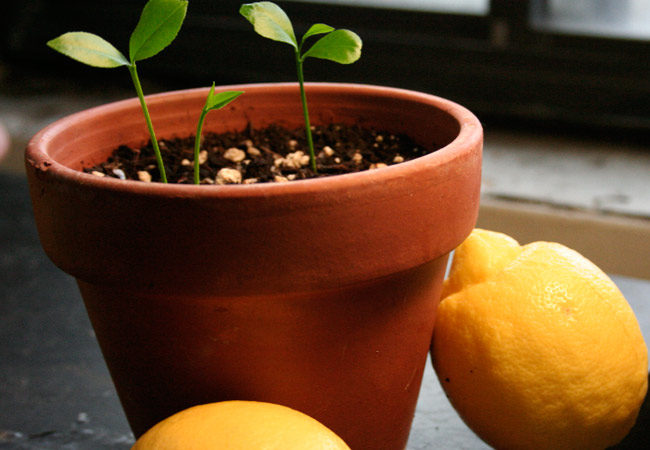
How to plant lemon from a bone
It all starts with the choice of bones, their preparation and subsequent landing. The beauty and fruiting of the lemon tree depend on these moments.
Choosing and preparing lemon bones
Citrus growers are advised to choose the most ripe, fragrant, delicious lemon, extract large bones of the correct shape from it and prepare them well before planting.
- Free the bone from the upper shell to accelerate the appearance of seedlings. In the process of removing the shell, do not damage the core, otherwise the entrances will not appear.
- Before planting, the seeds must be moistened. Soak them in a mild solution of sodium humate or in ordinary water.
- Prepare a shallow container, fill it with fertile soil. The container must have a hole in the bottom so that the moisture does not stagnate.
Important! Citrus bones quickly lose their germination, they harden and deform, so they need to be planted as quickly as possible after collecting.

Lemon growing requirements for soil
- For planting bones, the most ordinary soil of sand, leafy and peat is used. The mixture is thoroughly mixed, made loose and slightly moisturized.
- When lemon sprouts from the bone appear, it is recommended to use a slightly different soil composition from sheet humus, meadow soil, dung humus, prolonged river sand and wood ash for their transplantation.
- There should be no residues of oil products in the soil. To check the handful of the earth, stir in the water: if there is no rainbow shell on the surface, then everything is in order.
- It is also necessary to exclude the presence of parasites in the substrate. To do this, it is disinfected, and it does not matter where he was to get: in a store or surrounding forests. Disinfection is carried out as follows: the soil is poured into an enameled container, put it on fire and steam for 40 minutes, then the soil is dried.
Note! Bones of hybrid varieties of citrus fruits are not able to convey parental signs. Therefore, the chances of getting a great variety of lemon without vaccination are almost impossible.
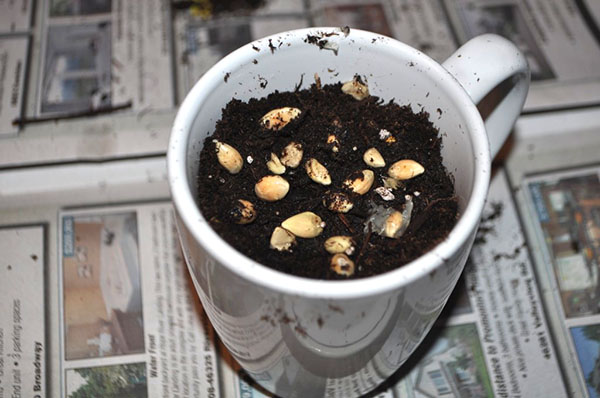
Features of planting lemon bones
- Planting work begins in February-April, when the day is increasing and the sprouts will be enough.
- Drainage is laid in the container: pots of pots, expanded clay, vermiculite. Then they pour soil into cups (use prepared or purchased for “citrus fruits”).
- A grain of lemon tree can let the shoots on one side, and the roots on the other. In order not to make a mistake, the bone is immersed in the soil horizontally.
- They are laid on top of the prepared soil, and sprinkled with one and a half centimeter ball of the Earth.
- They carry out light watering so that the bone does not dry out.
- The air temperature is maintained at least +18 ° C. They also cover the pots with a trimmed plastic bottle to maintain a microclimate at a stable level.
- After sowing the seeds, moderate watering is carried out: the soil is sprayed when cracks form on the surface. Excessive watering will lead to molds of seeds.
- The shoots appear differently: this can take from 14 to 30 days.
- When the shoots appear, the guy is not removed, but only often ventilated. And only after the formation of the fourth leaf, the greenhouse is removed.
- To make seedlings easier to be accustomed to indoor air, they are often sprayed.
- After about two weeks, seedlings are rearranged to a lighter place with multiple light.
Advice! Lemon at home from the bone in the first month after planting is not fertilized. And only after this time he is scarcely watered with biohumus in the summer and autumn time.
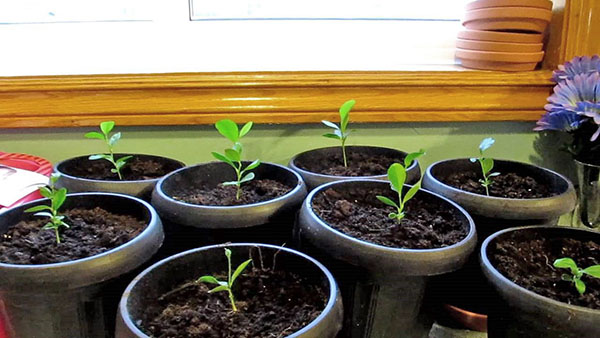
Bone lemon - care
The care of grown seedlings throughout the first year consists in watering, moderate fertilizer, transshipment in pottering pots, the formation of the crown, and if desired, vaccinating.
Watering indoor lemon
- The tree is watered as the soil dries.
- With the advent of cold weather, starting from late October to March, watering is carried out every 5-7 days.
- In the warm season, the soil is spilled abundantly with water daily, and its remains are drained from the pallet.
- It is very important to prevent a long stagnation of moisture or, conversely, drying the soil. In the first case, the roots will rot, in the second - the foliage and fruits will twist and fall.
Lemon lighting
- Lemon requires short lighting with multiple light. Too long staying in a sunny place stimulates the growth of greens, not fruiting.
- It is advisable to keep a tree on the eastern windowsill for a harvest. When the lemon is located on the south side, the plant must be shade.
- But the partial shade for the lemon is undesirable: the tree will slowly grow, and its fruits will be small and acidic.
- It is important every two weeks of vazon with lemon to turn up so that the crown is formed evenly.
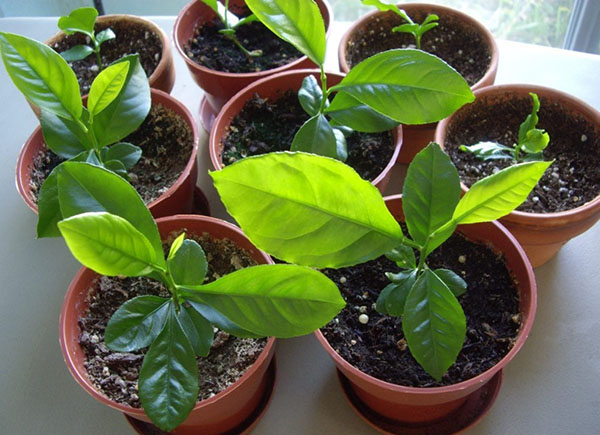
Lemon temperature
- At the time of the growing season, the temperature is needed from +17 to +20 ° C, and after the appearance of the ovaries +19 ... +23 ° C.
- In the winter, when the plant has a dormant period, the temperature should not exceed +14 ° C.
- If the tree is “not falling asleep”, the temperature is maintained at +18 ° C, while provided with additional lighting using a phytolamp.
- Bone lemon will be fruit only at conditions of stable air temperature. Never leave the lemon in a hot room, do not allow sharp jumps in temperature indicators.
- In the hot season, the tree needs high humidity. In summer, the crown must often be sprayed, and in winter to provide an additional source of moisture - water capacity or automated air humidifier.
Top dressing of indoor lemon
- In the summer, lemon tree is fertilized weekly. In winter, if there are fruits, lemon is fertilized once a month.
- Mineral or organic complexes are used for top dressing. Feel the plant two hours after the main watering.
- Use finished mixtures, for example, a “citrus mixture”.
- Or mix water and mullein in the same amount, insist a week. Then the infusion of mullein is diluted with water.
- Once every six months, soil is watered with a weak solution of potassium permanganate to disinfect it.

Transplanting indoor lemon
- The transplant is carried out a year after the first landing.
- In the spring, the plant is transplanted, carefully shaking off the layer of earth.
- A new pot is chosen a little more: its height and diameter should be 4 cm larger.
- In the process of transplanting to the bottom of the pot, drainage is laid with a layer of 2 cm. It is better to use a mixture of coal and expanded clay.
- Subsequently, the lemon is transplanted every two years.
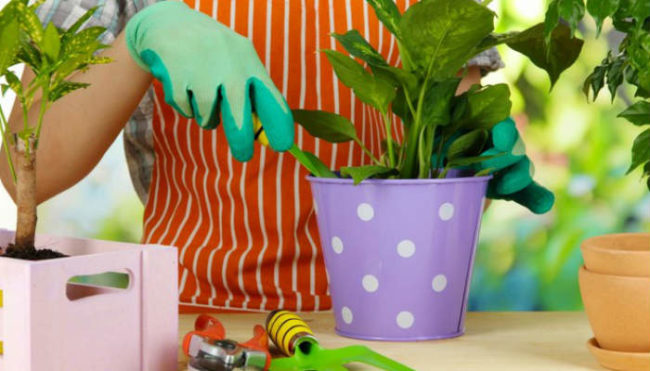
Formation of the crown of indoor lemon
- To make the tree look beautiful, the formation of the crown.
- Do it in the spring. They begin to cut a tree that has reached 18 cm in height.
- In the process of trimming, shoots are shortened, leaving up to 5 leaves on them. This stimulates branching before fruiting.
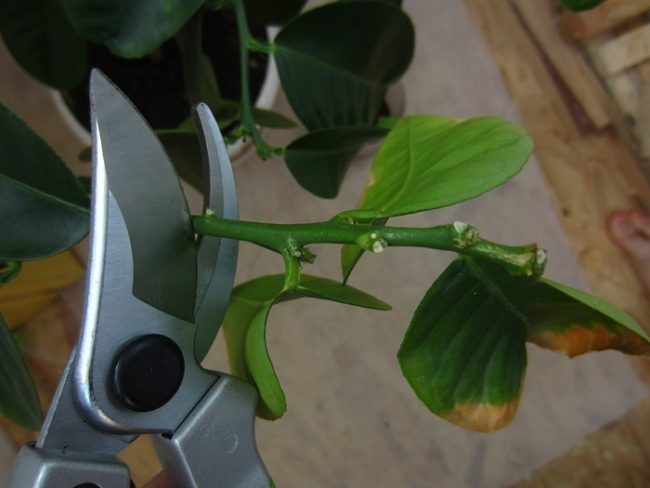
Vaccination of indoor lemon
Lemon is quite difficult to make fruit. To fix this situation, the plant is vaccinated.
Lemon cultivation:
- In April, when the juice begins to actively move along the trunk, he is fencing.
- In rainy weather (we need increased humidity), in a fruiting lemon tree, we cut a developed kidney along with a small area of \u200b\u200bthe bark and fibers.
- We choose a place for the kidney vaccination: the point should be 8-12 cm from the soil, have a smooth surface, and not in contact with other buds.
- Then we make an incision with the letter T, weed the bark a bit and push it out.
- We take the eye with the kidney and insert it into the incision on the stock.
- We apply a garden var on the vaccination point.
- After a month, we cut the top of the stock by 10 cm above the vaccinated kidney.
Vaccination of indoor lemon with a cuttings:
- In the spring, a stalk of fruiting lemon is vaccinated to the tree, implanting it into a breakdown.
- Cut the bark at the level of 10 cm from the soil.
- We break down the stump to a depth of 3 cm.
- Enter stalks with 4 kidneys into a breakdown.
- We wrap the vaccination site with a tape.
- After a month we remove the tape.
- We remove all the sprouts blooming on the lower part of the barrel so as not to prevent the development of the score.

Bone lemon - difficulties
- Yellowing of the foliage often indicates the waterlogging of the soil.
- The appearance of yellow spots on the foliage indicates a lack of iron.
- When dry tips of the leaves appear, it is necessary to eliminate the phosphorus deficiency.
- If the ovaries disappear, the leaves are wrinkled, the non -grain of manganese should be excluded.
- Also, the lemon tree can be damaged by pests - a spider mite, as well as a shield, worms. The processing of the crown with household soap diluted in water helps to destroy insects.
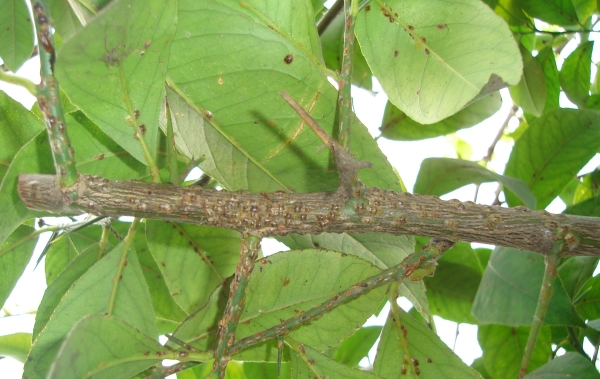
Follow the growing rules, take care of your tree and it will delight you with ripe lemons.









Comments
a couple of years ago, there was no side of metrogils from the same problem, there were no side effects ...
I’m not a fan of peeling at all, it saves from acne of metrogil, it also smoothes it ...
Great article! ...
I take the second course of the Capsules Climafite 911. The tides went very quickly. It became calmer, irritability went away and I sleep well ...
i also noticed - it is worth nervous, everything immediately affects the face. Therefore, I try to avoid conflicts and unpleasant people. Of the creams, I like Miaflow from wrinkles - smoothes not only small wrinkles ...